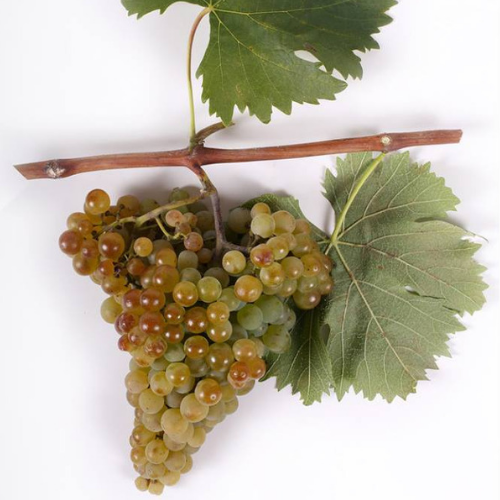Your cart is currently empty!

Kakhetian Mtsvane
A white variety of grape also known as “mtsvane” (”green”), “mtsvane nabada”, “dedali mtsvane” or “mamali mtsvane”.
ORIGIN: Kakheti. Named for its yellowish green grapes. It is very similar to sapena, and towards the end of the XIX century this grape was called “sapena”, but they are independent varieties. Mainly planted in vineyards near Telavi, Gurjaani, Kvareli and Sagarejo, and across the USSR in Soviet times.
PRODUCTION – When used to produce a European-style (without contact with grape skins, pips and stalks) it has a greenish straw colour and a harmonious, cheerfull and rich flavour of fruit. Traditional Kakhetian – style wines (with full contact with grape skins, pips and stalks) are amber and golden in colour with rich, harmonious and well balanced varietal aromas and flavours, full bodied, energetic, and strong fruit aromas if aged, famous in antiquity for their genle bouquet and strong fruit aromas. Kakhetian Mtsvane is also used to improve other kinds of wine.
THE LEAF – Medium, rounded or slightly oval. The underside of the leaf is covered in medium-length cobweb bristles.
THE BUNCH – Medium, broadly conical, oblong, rarely thin. Weight 160-175g.
THE GRAPES – Medium-sized and oval, greenish yellow. The waxy indumentum is quite thick and gives the thin-skinned grapes a soft greenish look. Thin-skinned.
THE PULP – Quite juicy and fleshy with a varietal flavour.
VEGETATION PERIOD – 153-159 days from bud opening to full maturity during the second half of September.
YIELD – Medium. 5-8 t per hectare.
SUGAR – At technical maturity – 18-21%, at physiological maturity – up to 22-24 %,
ACIDITY – at technical maturity 6 -7 g / l, at physiological maturity 4-6 g / l.
by
Tags:

Leave a Reply